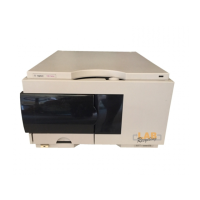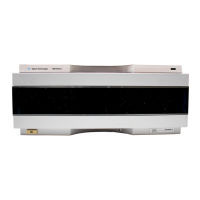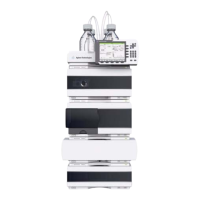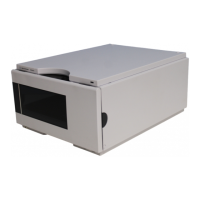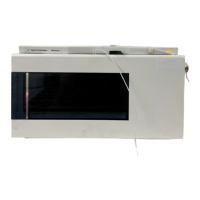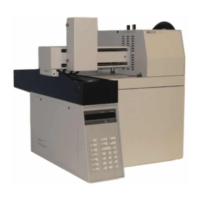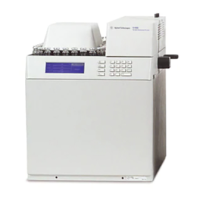Agilent 1200 Series Autosampler Reference Manual 231
Introduction to the Autosampler 7
• The GPIB connector is used to connect the autosamplers with a computer.
The address and control switch module next to the GPIB connector
determines the GPIB address of your autosamplers. The switches are preset
to a default address (see Table 47 on page 248) which is recognized once
after power on.
• The CAN bus is a serial bus with high-speed data transfer. The two
connectors for the CAN bus are used for internal Agilent 1200 Series
module data transfer and synchronization.
• The REMOTE connector may be used in combination with other analytical
instruments from Agilent Technologies if you want to use features such as
common shut down, prepare, and so on.
• The RS-232 connector may be used to control the autosamplers from a
computer through an RS-232 connection, using appropriate software. This
connector needs to be activated by the configuration switch module next to
the GPIB connector. The software needs the appropriate drivers to support
this communication. See your software documentation for further
information.
• The Thermostat-Autosampler connection is used for control signal transfer
and synchronization of the two modules. The cable must be installed for
operation of the ALS thermostat.
• The power input socket accepts a line voltage of 100–120 or
220–240 volts AC ± 10 % with a line frequency of 50 or 60 Hz. There is no
voltage selector on your autosamplers because the power supply has
wide-ranging capability. There are no externally accessible fuses, because
automatic electronic fuses are implemented in the power supply. The
security lever at the power input socket prevents that the autosamplers
cover is taken off when line power is still connected.
• The interface board slot is used for external contacts, BCD output and for
future use.
WARNING
DO NOT disconnect or reconnect the autosampler to ALS thermostat cable when the
power cords are connected to either of the two modules. This will damage the
electronics of the modules.
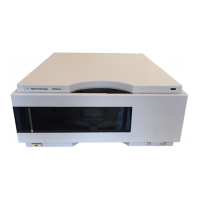
